 Nuclear Attack Submarines (S-601 to S-608). Service: 2019-2024 and present.
Nuclear Attack Submarines (S-601 to S-608). Service: 2019-2024 and present.Rubis, Saphir, Casabianca, Émeraude, Améthyste, Perle, Turquoise*, Diamant* (*cancelled)
French Cold War Submarines
La Creole class (1940) | Narval class (1954) | Arethuse class (1957) | Daphne class (1959) | Gymnote test SSBN (1964) | Le Redoutable SSBN (1967) | Agosta SSN (1974) | Rubis SSN (1979) | Amethyste SSN (1988) | Le Triomphant SSBN (started 1989)The Rubis class were the first nuclear-powered attack submarines of the Marine Nationale. Oddly compared to other fleets, they were built after the much larger and complex SSBNs they were supposed to protect. Originally planned in 1975, the class was to comprise six boats, the first entering service in 1983, the last in 1993 but two additional were cancelled as a result of post-1991 budget cuts. They featured the smallest dimensions for SSNs (a world record) and were based at Toulon for their whole career. They were largely an extrapolation of the contemporary Agosta class conventionally-powered attack submarines, but ended in two batches, as the final boats were much improved to reduce noise emission plaguing the original design: The AMÉTHYSTE sub-class. The Rubis were phased out from 2019 and are now gradually replaced by the massively improved and much larger Suffren class SSNs (Barracuda program).
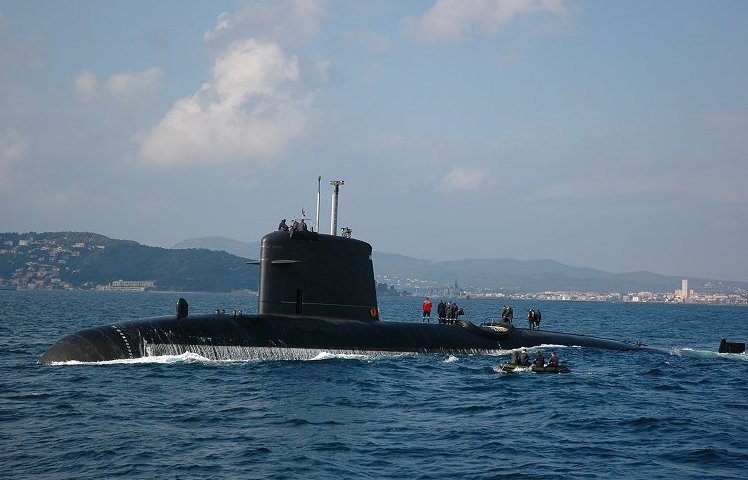
Development of the Rubis class
The development of nuclear submarines in France is a rather interesting topic, with a story wich started under the IVth Republic postwar, but which could trace its origins all the way back to 1937-39 and the work of the Curie family on radiation. In 1939 for example, Frédéric Joliot-Curie, Hans von Halban, and Lew Kowarski found that several neutrons were emitted in the fission of uranium-235, and this discovery led to the possibility of a self-sustaining chain reaction. However the war put an end to further development that could have led to the design of a reactor or any military application. Nevertheless, the same was named by De Gaulle as a High Commissioner for Atomic Energy and in 1948 oversaw the construction of the first French atomic reactor. I will not swelve in details on these early developments, check the article on the Gymnote and the development of Q 244, the first French SSN (1954-58) for more as well as the genesis for the Redoutable class SSBNs.
Q 244, the grandaddy of French nuclear submarines
The massive Q 244 was actually the first French SSN project, based on the Narval class, laid down in 1955. It was truly a beast, 113.75 m overall for a beam of 11.7 m, for a final displacement of estimated around 4,800t submerged. But it needed a 44-53 MW reactor, which development was in limbo, lacking some key technologies, that could have been imported from the US, if that was not for the opposition of Admiral Hyman Rickover and many in the Navy. Later it was rejected on the basis of the MacMahon law, with enriched uranium only delivered for non-military uses.
The Q 244 simply lacked a reactor at the time, and when it was impossible to procure a standard PWR of the type used on the Skipjacks, negociations stalled again when De Gaulle went back in power. The program was relaunched from scratch and without assistance in 1960, leading to the design of the Redoutable class SSBN was the utmost priority for De Gaulle, who wanted a naval deterrence as soon as possible, reasoning they would be “escorted” in the meantime by conventional attack subs, such as the Daphne class and their successors in development in the early 1970s.
Rubis of 1964 and 1976
The Rubis class thus became the third attempt at constructing a nuclear-powered attack submarine. Indeed after Q 244, there was a first “Rubis class”, authorised in 1964, but cancelled in 1968, just she was about to commence construction. The name (“ruby”) of “gem class” was inspired by the WW2 Saphir French minelayer submarines that had some success with the Free French Navy. The 1964 Rubis class predated the Redoutable class SSBNs and seemed at first a sensible choice of priorities. She was not laid down however before 1968 and this became her undoing as de Gaulle wanted instead the hull to be re-laid as Le Redoutable, first SSBN. As what exactly could look look like this forgotten SSN, it was a development of the Daphne class with an extra reactor compartment. This programme is however rather foggy and little survived. In 1964 when ordered, the first reactor was just successfully tested at Cadarache.
The previous 1960-1964 naval program called indeed still for two conventional Daphne-class submarines and one strategic missile nuclear submarine (“Sous-Marin Nucleaire Lance Engins (S.N.L.E.)”) but no SSN. By 1963, the government was able to define better the role of the Navy in the national deterrent force and with second 5-year plan of 1965-1970, priority was given still to the Force Nucleaire Strategique (F.N.S.) but the naval plan in 1972 (“Plan Bleu”) instead required for 20 attack submarines of both nuclear and conventional power.
This led to a new development called the Type SNA 72, a “sous-marin nucléaire de chasse” smaller than any contemporary nuclear-powered attack submarine design, a small hull enabled by the development of a new compact, integrated nuclear reactor-exchanger with turbo-electric drives. To gain time it was decided to retake the fire-control, torpedo-launching and submarine-detection systems of the also developed Agosta class in parallel.
New delaus of completion in the SSNs and yards already taken for the Agosta class, but delays in completing the latter and having all systems ready meant the first Rubis class boat was laid down again only in 1976. Eight boats were planned to match Plan Bleu. But delays in construction meant the last two were axed by the post-1991 budget cuts.
Design
The question of the small size of these submarines was the result of several factors: There was the idea a smaller sub was better suited to the more confined waters of the Mediterranean (and by extension the Baltic and Black sea if need be). There was the idea that a smaller sub was harder to detect, something that was proved wrong on the acoustic level, and the idea that a small submarine would be just faster, having less mass to power. The same idea drove Soviet scientists to design the early prototype for the Alfa class in the early 1960s as well. The small size had its benefits, but it also had a crucial issue, depending in the way the powerplant was built and integrated in the submarine, notably the creation of a type of “rafting”. The latter requited some extra space to build-in the necessary isolation of the powerplant from the hull.
Hull and general design
As built, the first four submarines of the early batch as planned measured 72.1 metres (236 ft 7 in) long overall for a beam of 7.6 m (24 ft 11 in) and draught of 6.4 m (21 ft).
To compare, this was 67 m (219 ft 10 in) and 6 m (19 ft 8 in) for the Agosta, so they were just a bit larger. The extra space was to accomodate the PWR, a new generation compared to the ones that powered the Redoutable class, and went into the latter batches of SSBNs. As for their general outlook, there were several key similarities but also differences with the Agosta. For similarities, the hull shape was the same essentially: They had a very peculiar straight stem, a design persistance at a time the “pure” teardrop shape was definitively adopted.
The nose in particular used the same sonar suite as the Agosta and was shaped the same. The remainder of the hull was cylindrical and ended with a classic vertical cross tail. The 5-bladed propeller was also the same. The sail shape as also about the same, but with the major difference that the diving planes were carried by the sail. The Rubis class looked “stout” as if the nose was cut out due to this odd straight stem, something that was later proven detrimental to acoustic quietness and corrected with the Amethyste class.
The Rubis class had displaced way more than the Agostas at 2,265 tonnes (2,229 long tons) standard and 2,385 t (2,347 long tons) surfaced and up to 2,670 t (2,630 long tons) submerged, compared to 1,500-1,760 long tons. The PWR lead-based hard shell partly explained this. They were still of single-hull construction, made of 80 HLES high elasticity steel to dive to depths over 300 m (980 ft), like the Redoutable, something derived from the 1960s Gymnote. This was about the same for the Agostas as well.
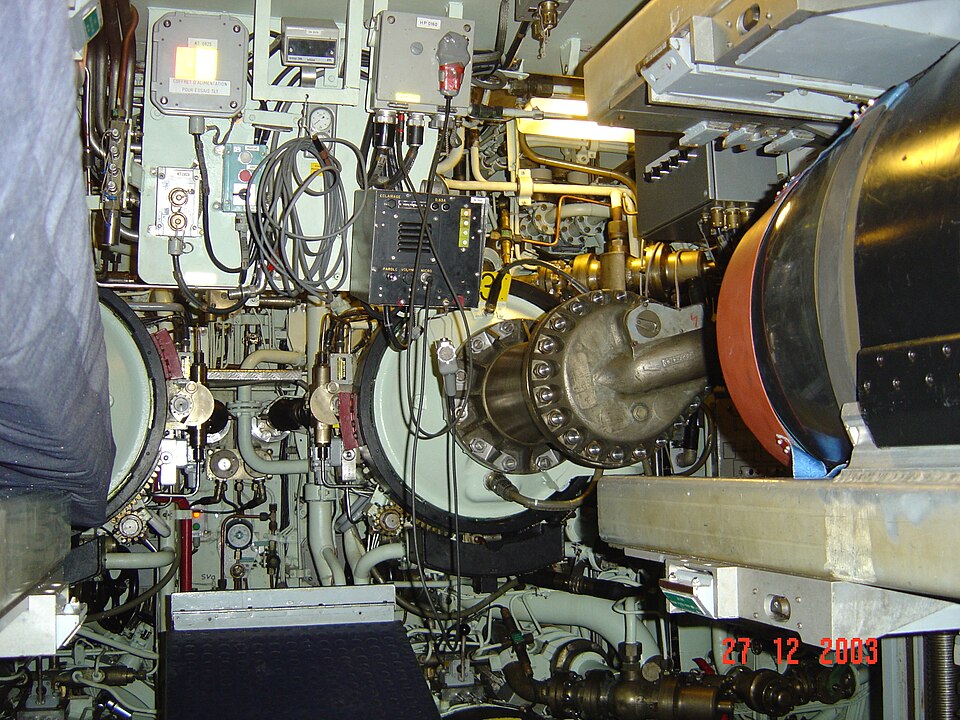
Powerplant
The Rubis class submarines were powered by a CAS-48 (CAS 48 means 48MW) pressurised water nuclear reactor (PWR), which generated 48 megawatts and used a 7% low-enriched uranium. It drove through a crankshaft two 3,950-kilowatt turbo-alternator sets, in turn driving via an ell-eletric gearbox uniy, a single shaft and propeller. Total output was 7,100 kW (9,500 shp), compared to c2600 hp for the Agostas. At low speeds tehe Rubis class use natural circulation to reduce noise emissions but if the reactor failed, there was an emergency electric motor, powered by batteries with alternatively a single SEMT-Pielstick 16PA4 diesel generator set rated for 480 kW (640 hp; 650 PS). The auxiliary unit is a Jeumont Schneider 8 PA4 V 185 SM.
The reactor core fired neutrons at uranium nuclei releasing heat, and new neutrons. These in turn, collide with another uranium nucleus, triggering a chain reaction. There is a primary water circuit transferring the heat released, after passing through an exchanger, to a secondary water circuit for contamination reason. For acoustic optimization the primary steam circuit is naturally circulated, no pumps. In the secondary circuit, the water transforms into steam, releasing energy in the turbine generators producing electricity, and later went through a condenser where it is cooled and reinjected into the exchanger, vaporized again in an endless cycle.
On battery power alone a Rubis class was able to cross 50 nautical miles (93 km; 58 mi) for 15 hours endurance. The cruising speed was of 25 knots (46 km/h; 29 mph) endurance of 45 days (60 days maximum) under nuclear power. Like SSBNs and unlike the Agosta class which neeed frequent maintenance and supply stops, the Rubis class had a system of dual crew, “bleu” and “rouge” alternating to stay at sea as long as possible, with a yearly service of 220-240 days on average. The crew was larger than an Agosta class as well at 66 men, including 9 officers.
Armament
Since the Rubus shared sensors and weapons with the Agosta class, they kept the same four 533-millimetre (21 in) torpedo tubes forward with a stowage for fourteen F17 Mod 2 torpedoes and SM39 Exocet anti-ship missiles, generall four, adopted from the start. The fire control system enabled to guide two weapons simultaneously. They were also capable of carrying FG 29 mines, with two replacing a single torpedo in stowage, so a total potential of 28 mines, knowing that any sensible commander, like in WW2 would always count of at least four torpedoes in case of a band encounter.
L5 Acoustic Torpedo
The 553 cm L5 entered service in 1971 (mod 1-3) and in 1980 the mod 4. They had a better range than the L3 at 7000 or 10,000 yards at 35 knots depending on the mods, carrying the same 440 lbs. (200 kg) HBX-3/TNT payloads but with better acoustic search range and resistance to ECM and decoys.
The ECAN L5 mod 3 torpedo used both active and passive homing, at a range of 9.5km, speed of 35kt, delivers on other sources a 150kg warhead down if needed to 550m.
⚙ specifications 53 cm L5
Weight: 2061 lbs. (935 kg), 170.1 in (4.320 m) lenght.
Warhead 440 lbs. (200 kg) HBX-3 or TNT
Power: Silver-zinc Battery
Range/Speed settings: Mod 1/3: 7,700 yards (7,000 m)/35 kts. Mod 4: 10,000 yards (9,500 m)/35 kts
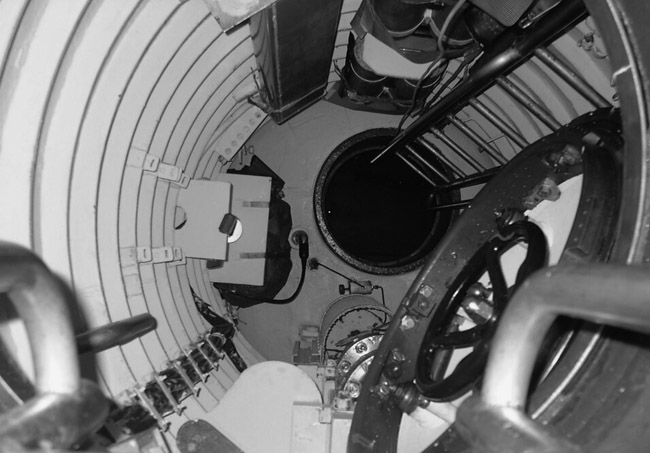
F17 Mod 2 Wire guided Torpedo
This was essentially the first French Wire-guided dual-purpose torpedo, using also a active-passive terminal homing when the cable was dropped.
The ECAN F17 mod 2 torpedo also had active and passive homing to a range of 20km, delivering 250kg warhead down to a depth of 600m if needed.
⚙ specifications 55 cm F17 M2
Weight: 3,108 lbs. (1,410 kg), lenght 236 in (6 m long) x 55 cm
Warhead: 551 lbs. (250 kg) HBX-3
Propulsion: Zinc-silver oxide batteries for a base 19,700 yards (18,000 m) at 35 knots, 31,700 yards at 24 kts under wire.
Specs: 323 in (5.900 m) long, range/speed 22,000 yards (20,000 m)/35 knots.
The F17P Mod 2 introduced in 1985 was longer at 221 inches (5.62 m) for 32,000 yards (30,000 m) at 35 knots.
The improved Mod 2 arrived in 1988 and was shorter at 212 inches (5.384 m) long, for 22,000 yards (20,000 m) at 40 knots.
SM 39 Exocet
As completed, all were capable launching the SM39 Exocet SSM (Each carrying four SM39). Target range and data are downloaded before launch into the Exocet’s computer. It follows a sea-skimming course using inertial navigation and active radar homing close to the target at Mach 0.9 over 50km. The 165kg high-explosive shaped-charge warhead is designed to penetrate the enemy vessel, explodes inside and create a large fire, difficult to master and potentially fatal.
FG 29 mines
These cylindrical multi-influence types were designed for submarine laying, using a magnetic, acoustic or pressure fuse. They were built by DCN but designed with Thomson Sintra, supplying the sensors. Development started from 1974 but deliveries only started in 1988. It’s possible that the earlier FG 18 would have been fitted on the Rubis after completion in case. The latter were in service on the daphne class.
⚙ specifications FG 29
Dimensions: 52 cm x 300 cm (20.5 x 118 in)
Total weight 1,000 kg (2,200 lbs.)
Payload 600 kg (1,323 lbs.) tritonal explosive.
Sensors
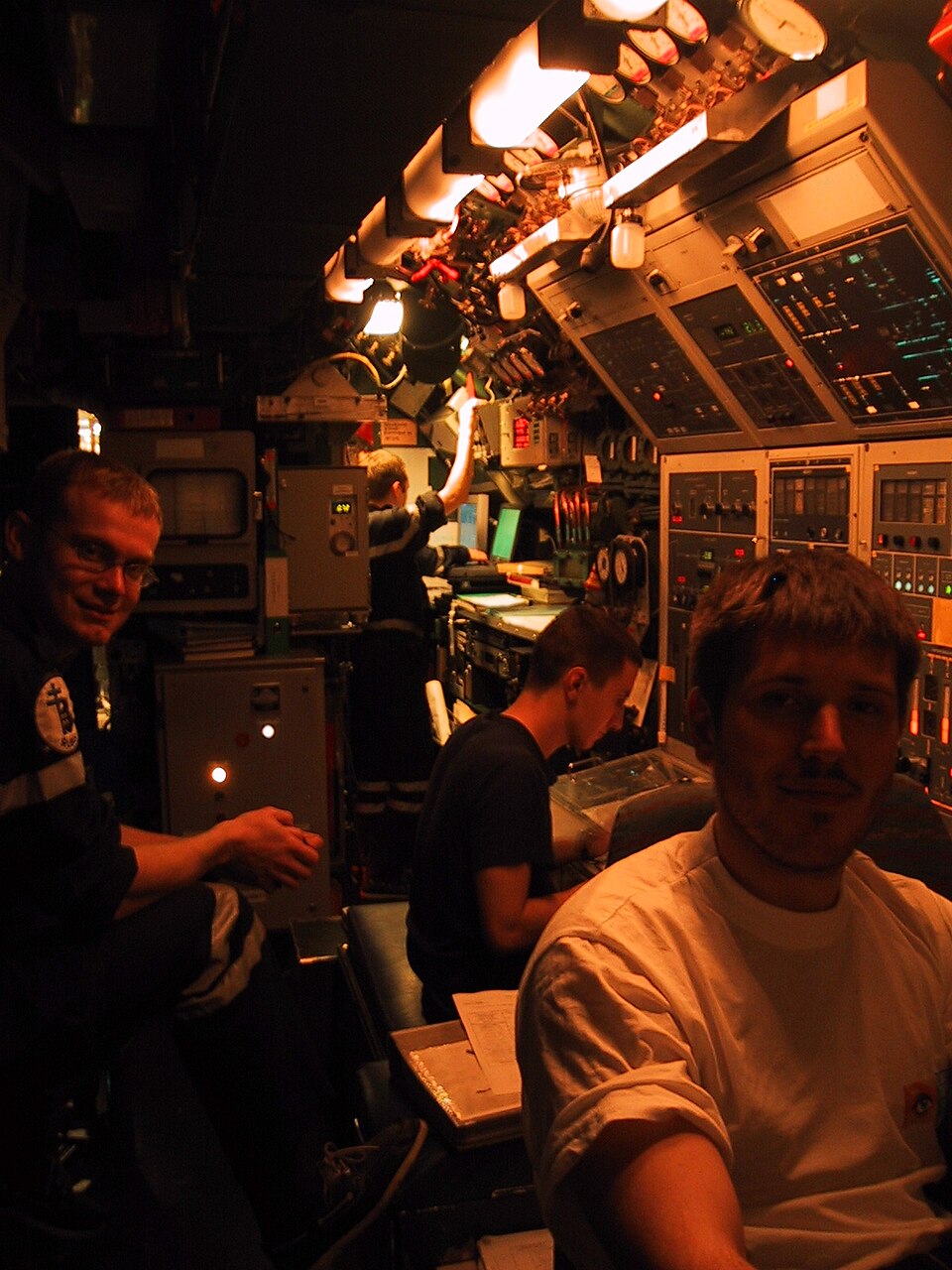
The Rubis class were fitted as completed with the DRUA 33 navigation/search radar, ARUR and ARUD electronic warfare systems, DSUV 22 multi-function passive sonar array, DUUA 2B active sonar, and DUUX 2 acoustic intercept sonar.
DRUA 33 radar
Type 1007 navigation supplied by Kelvin Hughes, operating at I-band.
DSUV 22 passive sonar
DUUA 2B active sonar
ARUR, ARUD EW
The DR 3000U electronic support measures system is a radar warning receiver called ARUR-13, operating in D to K bands. It is located on the masthead antenna array with omnidirectional and monopulse directional antennas and separate periscope warning antenna. This system provides direction finding accuracy of higher resolution than 1°.
DUUX 2 Intercept
DMUX 20 Sonar
Now developed by Thales Underwater Systems (formerly Thomson Marconi Sonar). Multifunctional passive sonar operating at low frequency.
DSUV 62C TAS
Submarine’s very low-frequency passive towed array system.
Sigma 40XP
From 2009, provided by SAGEM, new inertial navigation system.
The communication system comprised the TITAC (+ liaison 14), SEAO/OPSMER and Syracuse II Satcom system. The Computerized combat system centralizes underwater detection, information processing (TITAC + link 14) and weapons launch with the DLA firing control.

Conway profile

Author’s Rendition of the Rubis
⚙ Rubis specifications |
|
| Displacement | 2,400 t surfaced, 2,600 t submerged |
| Dimensions | 73.6 x 7.6 x 6.4m (241 ft 6 in x 24 ft 11 in x 21 ft) |
| Propulsion | PWR CAS-48 (48 MW), 2 turbo generators (2x 3,150 kW), EM (8,448 shp), auxiliary SEMT Pielstick 8PA4V185SM 450 kW |
| Speed | 25 knots (46 km/h; 29 mph) |
| Range | Unlimited, 20–25 years, 45 days patrols |
| Test depth | 300 m (980 ft) |
| Armament | 4 × 533 mm (21 in) TTs (14: F17 mod2, Exocet SM39, mines) |
| Sensors | DRUA 33 radar, DSUV 22, DUUA 2B sonars, ARUR/ARUD EW, DUUX 2 |
| Crew | |
The Amethyste Update
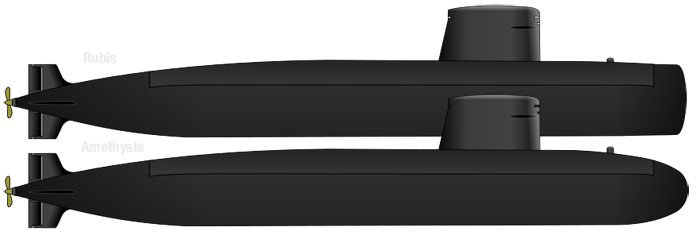
Comparison between the Rubis as built an Amethyste
The initial Rubis class proved to be very problematic in operation. In submrine circles they stands out as the noisiest submarines of the West, much more even than contemporary Soviet standards such as the Charlie II, Victor III, Sierra and Akula. They were “eay pickings” and a source of embarrassement for the Marine Nationale. The initial choice of a narrow hull and unexpected change in powerplant resulted in the near-absence of rafting in the power plant. The PWR associated pumps and gearbox all proved way too noisy, and they ended at the same acoustic level as Chinese submarines, which was literrally at the very top of the scale.
These unexpectedly high noise levels, superior even to the Agostas and Inflexible class SSBNs led to a deep redesign that delayed the compltion of the last two boats of the batch, S605 Améthyste and S606 Perle, both laid down at DCNS Cherbourg like earlier boats in 1984 and 1987 and launched in 1988-90. The program which delayed their completion to 1992 and 1993 saw a serie of radical improvements, under a programme named to match the sub-class name: “AMÉlioration Tactique HYdrodynamique Silence Transmission Ecoute” (Silent Acoustic Transmission Tactical Hydrodynamic Improvement) applied during construction.

Rubis after refit -CC, Yannick Le Bris)
The hull form was reshaped, lengthened to 73.6 m (241 ft 6 in) and the superstructure, and external bow made of glass-reinforced plastic. Studies in pools targeted water scoops and led to manyouter hull redesigns, and of course to further reduce noise emissions, the machinery was now assorted by much throrough flexible mountings, despite no extension of the beam. The program also included sonar and electronics upgrades and they ended with a brand new suite of radars, sonar and electronic warfare systems. The latter were tested on the Amethyste and later ported on the Rubis class and her three sisters as part of their major mid-life upgrades as well as some modifications in their powerplant. The class also was given apparently a new type of coating, albeit it is still classified.
The Rubis’s DSUB 62C towed passive sonar array was a real game changer was introduced, given the boats were so loud. They also came with a DUUG 2 sonar intercept (instead of DUUX 2), and the new DMUX 20 sonar suite, plus the new acoustic intercept DUUX 5. All first four boats were completely rebuilt to these new same standards from 1989 to 1995 and ended nearly identical to Amethyste class. However their noise level apparently rermained higher than US and British contemporaries. The acoustic reduction issue was the object of much R&D in the early 2000s that would lead in the next Barracuda program. One conclusion was that a larger hull would enable a far better rafting, which was proven right.

Author’s rendition of the Amethyste
⚙ Amethyste specs. |
|
| Dimensions | 73.6 m (241 ft 6 in) and same |
| Propulsion | Same but rafting and hull coating |
| Armament | Same but F21 Artemis torpedoes |
| Sensors | DMUX 20 A/P sonar, ETBF DSUV 62C towed array, DSUV 22 passive sonar, DRUA 33 radar, ARUR 13 |
General evaluation
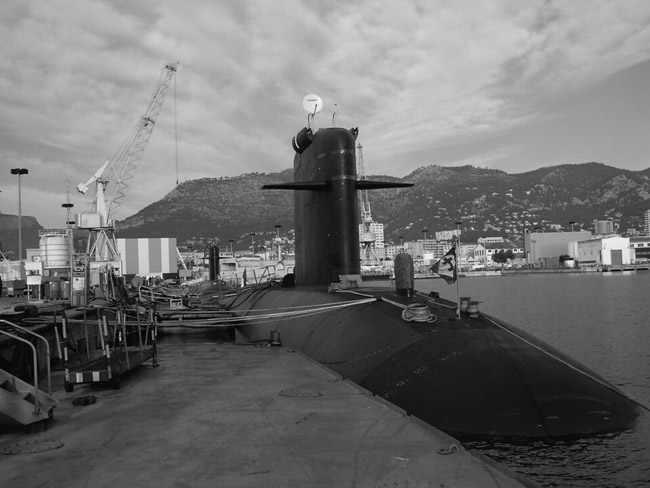
On another note, the first French SSNs were to be named after French famous maritime regions, also ex-battleships names, Provence, Bretagne and Bourgogne. But S601 to S603 were renamed after the WW2 minelayers subs instead. Hence the Rubis (Ruby), Saphir (sapphire), Emeraude (Emerald) with Casabianca as another oddity, named after corsican naval officer Luc-Julien-Joseph Casabianca (He died on the Orient at Aboukir). She was to be “Bourgogne” initially but was renamed after the most successful French 2500 tonnes Redoutable class interwar submarines, Casabianca, another Free French submarine.
Construction of the first ship amounted to 850 million French francs and the first three were renamed by November 1980. Rubis was also financed under the 3rd Military Equipment Plan but the other three under the 4th Military Equipment Plan. Rubis’ reactor went critical in February 1981 with trials in June. Hulls 5 and 6 were ordered on 17 October 1984, plus a 7th on 24 April 1990 with the 8th cancelled in September 1991. Construction for the 7th, S607 Turquoise was delayed pending a deicision and she was eventually cancelled in June 1992. The French Navy in between attempted to sell her as a conventionally-powered unit but failed to attact any order.
All six were based at Toulon in the Escadrille de sous-marins nucléaires d’attaque (“SSN squadron”). The first SSN came after already two false starts in 1955 and 1964. Again, De Gaulle’s priorities meant deterrence went before the capabilities of advanced SSNs so France had to wait until the last decade of the cold war to have its own SSNs, versus the 1950s for the US and USSR, and 1960s for UK. They left a considerable gap in capabilities and left their eary SSBNs without adequate escorts for years. Out of the ambitious 23 attack submarines of Plan Bleu, only ten were ultimately delivered, four conventional (the Agosta class) and six nuclear (The Rubis class) after the last two were cancelled.
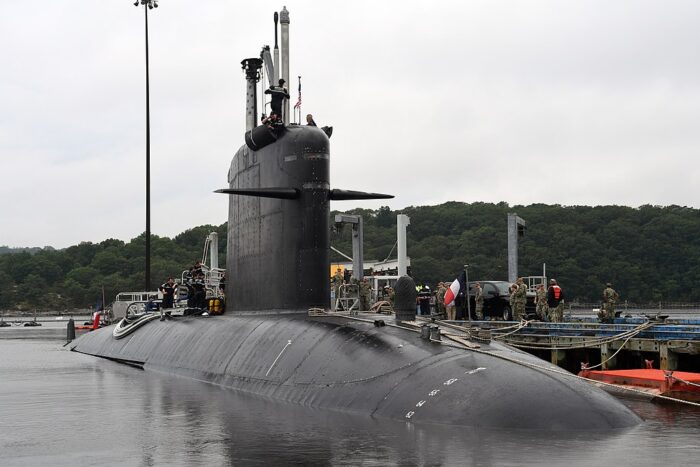
In addition to be the first French SSNs, the many shortcuts taken in their development, as basically a nuclear-adapted Agosta class led to severe shotcomings in acoustic signature. Being the noisiest SSN, a strategic asset, aside Chinese boats, was nothing to brag about. This realization led to a quick plan to redress the situation, formulated already in 1983 as the first sea trials were made, reavealing unexpected and surprisingly high noise levels from many sources. This forced the early boats to mostly operate at reduce speed, which was already not impressive. It is estimated on average, they cruised at 16-18 knots in the last years of the cold war, before measures were taken starting in 1988. The process asked for considerable researches and a serie of overhauls, and two prototypes, the Amethyste sub-class, but ultimately the goal was reached.
Saphir was the first to undergo AMÉTHYSTE from November 1989 to May 1991, Rubis from September 1992 to July 1993 but on 20 August she collided with the oil tanker Lyria and needed repairs. From 1993 to 1994, Casabianca also had the same upgrade.
There was a superb demonstration of this, when during the Péan inter-allied manoeuvres of 1998, Casabianca, fresh from her last acoustic refit, managed to sneak into the battle group and “sink” USS Dwight D. Eisenhower and her escort, a Ticonderoga-class cruiser. In general these types of exploits remained limited to the navy circles and to brass, but it was ultimately leaked to the press, to the embarrassement of the US command for such a small sub, 20+ years old at this point. The exploit was re-edited by Saphit in COMPTUEX 2015 on USS Theodore Roosevelt and her escort.
There were also incidents:
On 30 March 1994, Émeraude developed steam leakage in the secondary steam loop, with ten casualties including her commanding officer. She had her AMÉTHYSTE rebuild as part of her repairs fromm May 1994, until December 1995. In September 2000 Saphir detected unusually high radioactivity in the primary reactor loop. She had to returned to port and be docked for six months, repaired and having a new core installed.
More recently on 12 June 2020, Perle caught fire in drydock while undergoing major renovations, around 10:35 engulfing the forward section of the submarine and noted as so fierce it took time to put it out. There was no danger of explosion as all weapons had been retired. By October 2020 it was announced she would be repaired using the forward section of the just decommissioned Saphir, with repairs were projected to be completed in 2022 for sea trials by 2023.
Today (2025), both Amethyste and Perle are still in service, peind replacement by the new Barracuda class programmed SSNs, probably FY2030.
Replacement and the Barracuda Program

The Suffren-class (Baracuda program, started in 1999) is the current class of French nuclear-powered attack submarines, designed by the Naval Group (DCNS), intended to replace the Rubis-class. Construction started in 2007 for the lead boat Suffren, commissioned on 6 November 2020, operational on 3 June 2022. Six are currently planned, with Duguay-Trouin and Tourville commissioned and the latter ongoing full operational capability. De Grasse is planned to replace Emeraude in 2026, albeit she is already decommissioned since december 2024 and mothballed. She could be brought to operations again in a few months, as Casabianca and her other sisters. None are listed for scrapping yet.
A Canadian Rubis ?
In 1987, the Canadian White Paper on Defence recommended the purchase Rubis or Trafalgar-class submarines under technology transfer. The ten to twelve boats were known as the “Canada class”. The choice was scheduled announced before the Summer 1988. The ambitious plan was for a three-ocean navy and sovereignty over Arctic waters. But both designs were rejected under the Canadian Statement of Requirement (SOR). The Rubis in particular were rejected as noisy underwater and slow, plus the additional hassled as the first 4–5 needed to be built in France. The only advantage was to not require US permission for the nuclear propulsion technology, the latter likely to give their veto. Later a design called “Canadian AMETHYSTE” was proposed, under the new standard and added an “ice pick” to operate under ice, and new torpedo tubes firing the Mark 48 torpedoes. Hiwever a poltical change against nuclear power doomed the project in April 1989 in addition to strong American opposition to the program and high cost.
Career of the Rubis class
 S601 Rubis (ex-Provence)
S601 Rubis (ex-Provence)
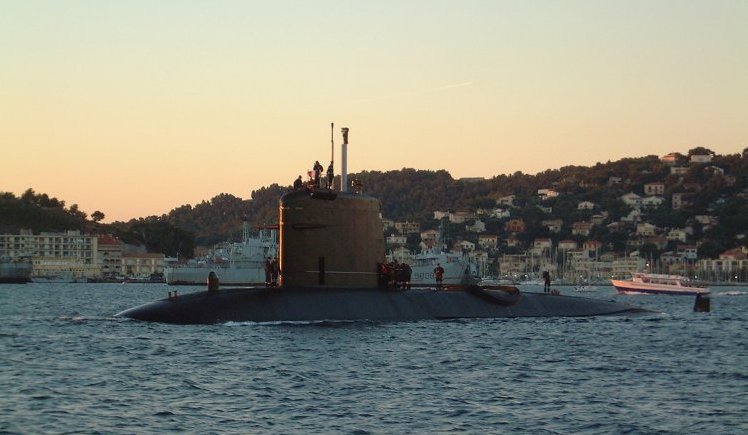
Provence was laid down at Laid down at DCNS Cherbourg on the Atlantic coast on 11 December 1976, launched on 7 July 1979, and commissioned on 23 February 1983. She was renamed renamed Rubis in 1993. She started service on 23 February 1983 from Toulon base, first boat in the new SSN squadron. In 1985, she allegedly evacuated DGSE agents from New Zealand for the Rainbow Warrior mission on the yacht Ouvéa but the even was cited by a single newspaper at the time and never given any evidence, nor admitted.
In 1991, Rubis took part in the Gulf War. From September 1992 to July 1993, was under major refitting to the Améthyste level. On 17 July 1993, she collided with the tanker Lyria when surfacing, causing minor damage. On 18 July 1996 her crew was awarded the fourragère of the Ordre de la Libération as a legacy of her namesake of the Second World War with a medal and was authorized to bear the Free French Navy flag.
Rubis took part in Operation Trident (1999) the French side of the bombing campaign over Yugoslavia as protecting the French aeronaval group around FS Foch. Later with Améthyste she interdicted the Kotor straits to the Serbian Navy and gathered information for the coalition.
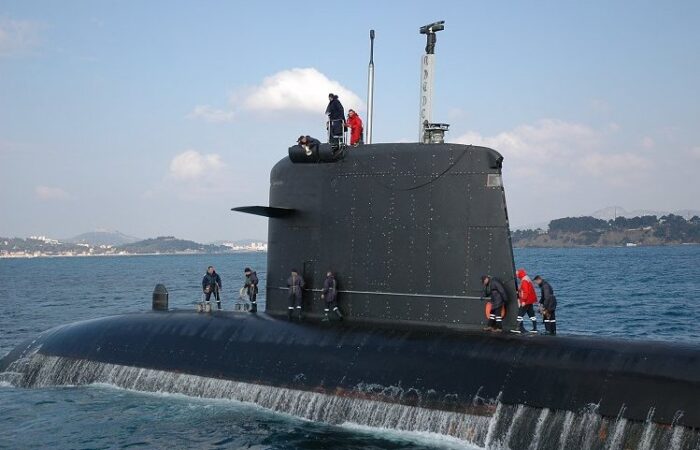
Casabianca going home, note the water pouring out of her hull scoops
In 2002, Rubis protected Task Force 473 in the Indian Ocean as part of Operation Hercules, naval side of the invasion of Afghanistan.
On 30 March 2007 while submerged she hit the bottom, damaging her bow and sonar and was repaired, back in July 2008.
Rubis was scheduled for decommission initially in 2017, going into yet another modernization and back in commission from 2019 to FY2029. But instead with the Barracuda being acceslerated she was withdrawn from service by late 2022 and in that summer, performed her final mission. She was decommissioned in Cherbourg on 2 December 2022. Like her sister she is mothballed, waiting for a future deactivation of the core and gradualy scrapping.
 S602 Saphir (ex-Bretagne)
S602 Saphir (ex-Bretagne)

Bretagne was laid down at Cherbourg on 1 September 1979, launched on 1 September 1981 and commissioned on 6 July 1984. Frim October 1989 and May 1991, she had a major refit to the Améthyste standard. By September 2001 she torpedoed and sank the destroyer target ship D’Estrées off Toulon. On June 5, 2012 her crew was presented with the Cross for Military Valour with bronze palm for a confidential mission. On 6 March 2015 it was reported on the blogspot of the French Ministry of Defence (post taken down later) that off Florida Saphir “sunk” USS Theodore Roosevelt and her escort in exercise.
After 35 years of service, Saphir was decommissioned in July 2019, first of her class to do so. By October 2020 it was announced that Perle, badly damaged by a fire, would be repaired using her whole forward section from January 2021 to early 2023. Without her nose, it’s likely Saphor will be first scrapped after taking care of her nuclear core.
 S603 Casabianca (ex-Bourgogne)
S603 Casabianca (ex-Bourgogne)
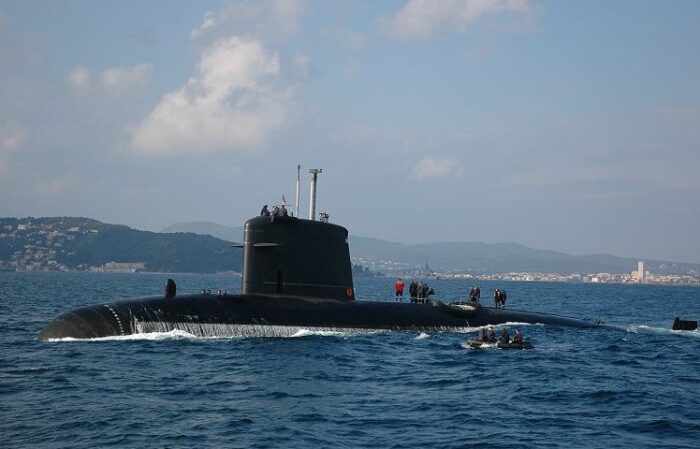
Bourgogne was laid down at Cherbourg on 19 September 1981, launched as Casabianca on 22 December 1984 and Commissioned on 13 May 1987 for an entry into service on 21 April the same year. She undertook a major refit, upgrading her to the level of Améthyste. Like the others, her logs are classified for 75 years. She was however the first to visit the naval base at Severomorsk, Russian Northern Fleet in 2003. She escorted the Charles de Gaulle Battle Group in the Mediterranean and Indian Ocean as part of her major deployment in 2007.
Like Saphir in exercises she managed to “sink” USS Dwight D. Eisenhower and the cruiser USS Anzio as part of the Péan inter-allied maneuvers of 1998.
On 21 August 2023, she made her final mission, and was redirected to Cherbourg on 1 September for decommissioning. She now mothballed. Her Suffren class replacement, commissioned, is due to final operational certification this summer.
 S604 Émeraude
S604 Émeraude
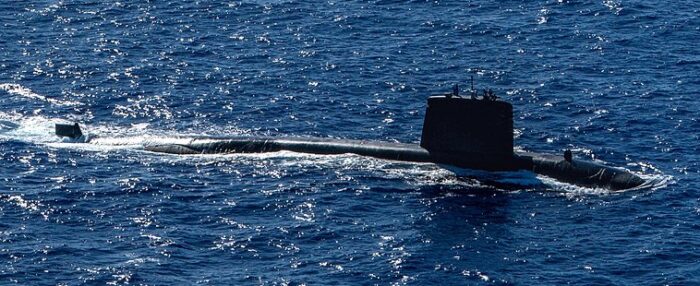
Emeraude was laid down at Cherbourg on October 1982, launched on 12 April 1986 and commissioned on 15 September 1988. Between May 1994 and December 1995, she had her refit, Améthyste standard upgrade. On 30 March 1994 she had an accidental explosion in her engine compartment while in a naval exercise off Toulo, killing ten men including the commander examining the turbo-alternator room. She was back under diesel and battery power. In June 2009 she was sent to the mid Atlantic for the search for the flight data recorder and cockpit voice recorder from Air France Flight 447 Rio-Paris. In February 2021, she made a “freedom of navigation” passage in the South China Sea. By October 2024, she started her last mission from Toulon, transitting to Cherbourg to be decommissioned but instead was sent for exercises with the Moroccan Navy. On 15 November 2024 she was decommissioned in Cherbourg for good. She is now mothballed, pending replacement by the fourth Suffren class SSN planned for 2026.
 S605 Améthyste
S605 Améthyste
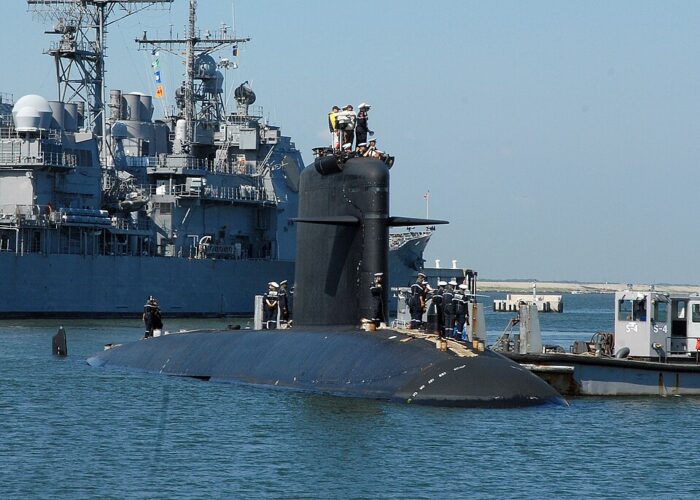
NORFOLK, Va. (July 16, 2008)The French nuclear attack submarine FS Amethyste (S 605) arrives at Naval Station Norfolk after completing patrol operations in the West Indies. Amethyste is making a four-day port call before joining the Theodore Roosevelt Task Group for Joint Task Force Exercise 08.4. starting next week. U.S. Navy photo By Mass Communication Specialist 2nd Class Kelvin Edwards (Released)
Améthyste was the first of a second batch, delayed after a complete redesign which became a standard to refit the others. She was laid down on 31 October 1983, launched on 14 May 1988 and commissioned on 3 March 1992, in service on 20 March. Like the others she joined the SSN squadron of Toulon. She took part in Operation Allied Force (1999 bombing campaign over Yugoslavia), protecting the NATO naval group. With Rubis, she interdicted the Kotor straits to the Serbian Navy and gathered intel for the coalition. She took part of the Charles De Gaulle task group from 30 October 2010 over 4-month deployment between the Mediterranean, Red Sea, Indian Ocean, Persian Gulf under Rear Admiral Jean-Louis Kerignard to fight piracy off the coast of Somalia and support NATO strikes above Afghanistan. The CBG joined two U.S. Navy carrier strike groups (USS Abraham Lincoln and USS Harry S. Truman) in the Persian Gulf and on 7–14 January 2011 she took part in the bilateral naval exercise with the Indain Navy (Varuna 10) with Viraat and the frigates Godavari and Ganga, submarine Shalki. This exercise ended in the Arabian Sea. By December 2022, she operated in the Atlantic, visiting the Clyde naval base, but also New London and Norfolk USA. Still active.
 S606 Perle
S606 Perle
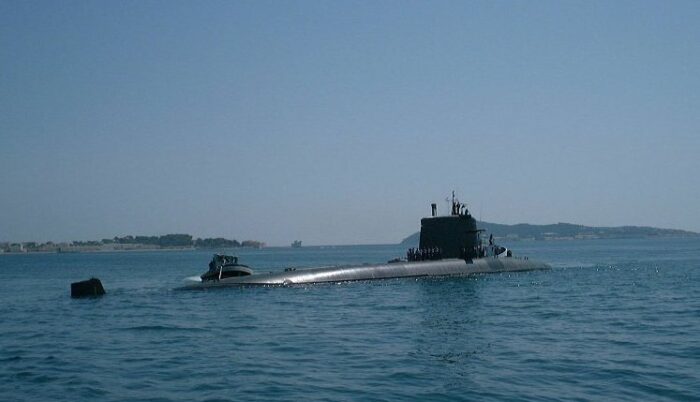
Perle was ordered to Cherbourg as the 2nd of the second batch but ended as last of her class. She was laid down on 22 March 1987, launched on 22 September 1990 and completed on 7 July 1993. She took part in the Auriga 2010 exercise with seven RN warships and a US destroyer. On 12 June 2020 at 10:35 a.m., while drydocked in maintenance at Toulon, a firce fire started in her bow, reported under control at 9:36 PM. Firefighters (30+) also preventively flooded the rear compartments with foam. No injuries. He PWR had been removed so no radioactive contamination was reported and the armament was absent. So by October the MoD announced her repairs by using the forward section Saphir, just decommisioned. Repair went from January 2021 to 2023, from Cherbourg shipyard back to Toulon and complete her last refit interrupted by the fire. The operation to swap their nose represented about 250,000 hours of work. Oddly she ended 68 tonnes heavier with a meter longer hull compared to her sisters. However still in Toulon she experienced another fire on 26 September, quickly put under. By 17 November 2022 she left the dry dock to continue tests prior before sea trials and returned to active status in May 2023 for a new cycle of service until 2028 and planned replacement by the last of the Barracuda program FY2030.
Read More/Src
Books
Couhat, Jean Labayle, ed. (1986). Combat Fleets of the World 1986/87. Annapolis, Maryland: Naval Institute Press.
Jordan, John (1995). “France”. In Chumbley, Stephen (ed.). Conway’s All The World’s Fighting Ships 1947–1995. Annapolis, Maryland: Naval Institute Press.
Saunders, Stephen, ed. (2009). Jane’s Fighting Ships 2009–2010 (112 ed.). Alexandria, Virginia: Jane’s Information Group Inc.
Wertheim, Eric, ed. (2013). The Naval Institute Guide to Combat Fleets of the World (16th ed.). Annapolis, Maryland: Naval Institute Press.
Links
on usni.org/ french-submarine-force
naval-technology.com/ rubis/
Examination of the Proposed Conversion of the U.S. Navy Nuclear Fleet from Highly Enriched Uranium to Low Enriched Uranium by Cameron McCord.
en.wikipedia.org Rubis-class_submarine
navweaps.com FR Mines.php
netmarine.net/ casabianca index
netmarine.net/ Rubis class caracteristics
web.archive.org netmarine.net amethyste actu
amicale-rubis.fr/
netmarine.net forum/
meretmarine.com cherbourg casabianca decom.
meretmarine.com cherbourg emeraude decom.
web.archive.org defpro.com/
archive.ph navyrecognition.com/
opex360.com/
lemonde.fr/


 Latest Facebook Entry -
Latest Facebook Entry -  X(Tweeter) Naval Encyclopedia's deck archive
X(Tweeter) Naval Encyclopedia's deck archive Instagram (@navalencyc)
Instagram (@navalencyc)


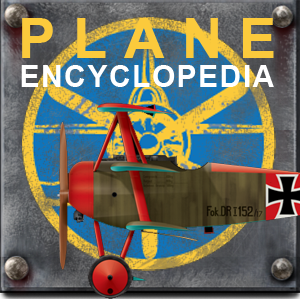
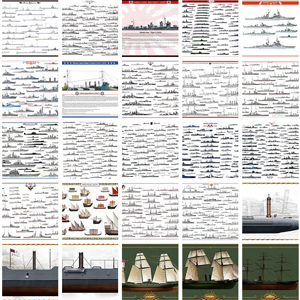

 French Navy
French Navy Royal Navy
Royal Navy Russian Navy
Russian Navy Armada Espanola
Armada Espanola Austrian Navy
Austrian Navy K.u.K. Kriegsmarine
K.u.K. Kriegsmarine Dansk Marine
Dansk Marine Nautiko Hellenon
Nautiko Hellenon Koninklije Marine 1870
Koninklije Marine 1870 Marinha do Brasil
Marinha do Brasil Osmanlı Donanması
Osmanlı Donanması Marina Do Peru
Marina Do Peru Marinha do Portugal
Marinha do Portugal Regia Marina 1870
Regia Marina 1870 Nihhon Kaigun 1870
Nihhon Kaigun 1870 Preußische Marine 1870
Preußische Marine 1870 Russkiy Flot 1870
Russkiy Flot 1870 Svenska marinen
Svenska marinen Søværnet
Søværnet Union Navy
Union Navy Confederate Navy
Confederate Navy Armada de Argentina
Armada de Argentina Imperial Chinese Navy
Imperial Chinese Navy Marinha do Portugal
Marinha do Portugal Mexico
Mexico Kaiserliche Marine
Kaiserliche Marine 1898 US Navy
1898 US Navy Sovietskiy Flot
Sovietskiy Flot Royal Canadian Navy
Royal Canadian Navy Royal Australian Navy
Royal Australian Navy RNZN Fleet
RNZN Fleet Chinese Navy 1937
Chinese Navy 1937 Kriegsmarine
Kriegsmarine Chilean Navy
Chilean Navy Danish Navy
Danish Navy Finnish Navy
Finnish Navy Hellenic Navy
Hellenic Navy Polish Navy
Polish Navy Romanian Navy
Romanian Navy Turkish Navy
Turkish Navy Royal Yugoslav Navy
Royal Yugoslav Navy Royal Thai Navy
Royal Thai Navy Minor Navies
Minor Navies Albania
Albania Austria
Austria Belgium
Belgium Columbia
Columbia Costa Rica
Costa Rica Cuba
Cuba Czechoslovakia
Czechoslovakia Dominican Republic
Dominican Republic Haiti
Haiti Hungary
Hungary Honduras
Honduras Estonia
Estonia Iceland
Iceland Eire
Eire Equador
Equador Iran
Iran Iraq
Iraq Latvia
Latvia Liberia
Liberia Lithuania
Lithuania Mandchukuo
Mandchukuo Morocco
Morocco Nicaragua
Nicaragua Persia
Persia San Salvador
San Salvador Sarawak
Sarawak Uruguay
Uruguay Venezuela
Venezuela Zanzibar
Zanzibar Warsaw Pact Navies
Warsaw Pact Navies Bulgaria
Bulgaria Hungary
Hungary

 Bundesmarine
Bundesmarine Dutch Navy
Dutch Navy Hellenic Navy
Hellenic Navy Marina Militare
Marina Militare Yugoslav Navy
Yugoslav Navy Chinese Navy
Chinese Navy Indian Navy
Indian Navy Indonesian Navy
Indonesian Navy JMSDF
JMSDF North Korean Navy
North Korean Navy Pakistani Navy
Pakistani Navy Philippines Navy
Philippines Navy ROKN
ROKN Rep. of Singapore Navy
Rep. of Singapore Navy Taiwanese Navy
Taiwanese Navy IDF Navy
IDF Navy Saudi Navy
Saudi Navy Royal New Zealand Navy
Royal New Zealand Navy Egyptian Navy
Egyptian Navy South African Navy
South African Navy






























 Ukrainian Navy
Ukrainian Navy dbodesign
dbodesign